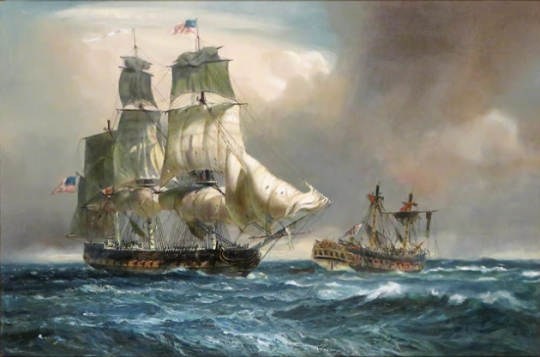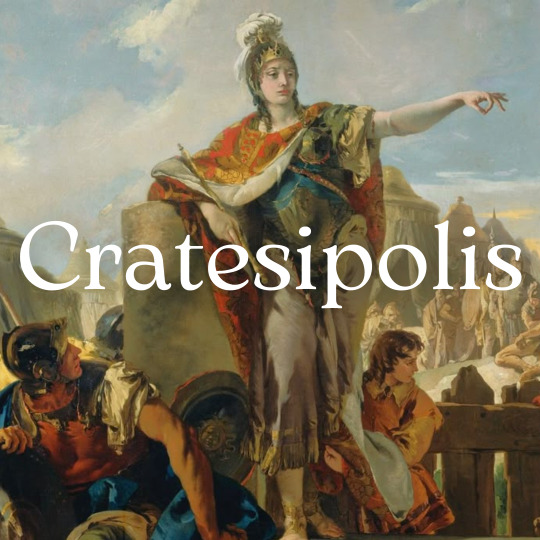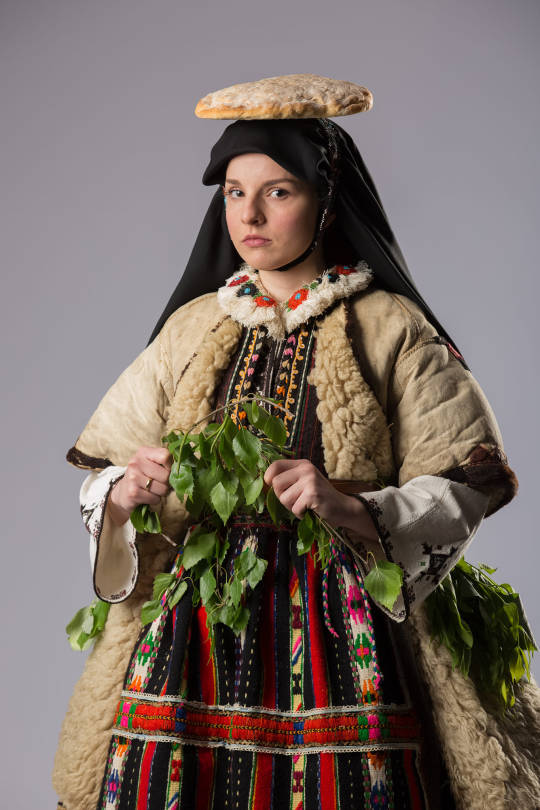#Macedonianism
Explore tagged Tumblr posts
Text
Understanding Formal Creed Statements: Its Need in Early Christianity
Explore the need for formal creed statements in early Christianity, addressing false teachings like Gnosticism, Docetism, and Arianism to preserve the true faith of the Church.
In the name of God the Father, Christ Jesus His Son and the Holy Spirit, One True God. Amen. Dear brothers and sisters in Christ Jesus In the previous blog, where we introduced the topic of the Statement of Faith, we learned how the early Christian statement of faith, encapsulated in the Apostles’ Creed and the Nicene Creed, played a pivotal role in defining and uniting Christian belief across…

View On WordPress
#Apostles&039; Creed#Arianism#Christian Doctrine#christian theology#Church Fathers#Docetism#early church history#ecumenical councils#featured#Gnosticism#heresies#Macedonianism#Nestorianism#Nicene Creed#Orthodox faith#Pelagianism#Theological Controversies#Theotokos#Trinity
2 notes
·
View notes
Text

Slavic Women from Northern Macedonia
#ethnography#traditional costume#northern macedonia#macedonia#balkan#balkans#slavic#slavs#macedonian
499 notes
·
View notes
Text
Roman Empire, Italy: The Roman expansion in Italy covers a series of conflicts in which Rome grew from being a small Italian city-state to be the ruler of the Italian region… In 200 A.D., Rome had roughly 1,200,000 citizens, and today it has over 2,500,000 residents. Rome started as a small Italian village along the Tiber River roughly 1,100 years before it became the largest city in the world.. Gladiator is loosely based on real events that occurred within the Roman Empire in the latter half of the 2nd century AD… Marcus Aurelius Antoninus better known by his nickname Caracalla was Roman emperor from 198 to 217 AD. Wikipedia
#Roman Empire#Rome 200 AD#(200–197 BC)#Second Macedonian War#Gladiator#Timeline of Roman history#Caracalla#Roman emperor#Rome#Italy#europe
368 notes
·
View notes
Text

Macedonian woman, North Macedonia, by Festival Folklora Sarajevo
#macedonian#north macedonia#europe#eastern europe#folk clothing#cultural clothing#traditional clothing
326 notes
·
View notes
Text

Demetrius I Poliorcetes
#demetrius i poliorcetes#demetrius poliorcetes#art#macedonian#nobleman#king#bronze#bust#head#demetrios poliorketes#ancient greek#ancient greece#classical antiquity#europe#european#history#macedon#macedonia#antigonid dynasty
242 notes
·
View notes
Note
Hello my friend, I'm on a quest to find Macedonian Miku but I've had ill luck

Here She is!
199 notes
·
View notes
Text

Silver tetrobol (diameter=15 mm; weight=2.45 g) minted in the Kingdom of Macedon during the reign of Perdiccas II (r. 454-413 BCE). The obverse features a horseman who wears a petasos (the broad, flat hat characteristic of Macedon) and carries hunting spears; he is accompanied by a dog. This image reflects the keen interest in hunting among the Macedonian aristocracy. The reverse features the Nemean Lion, whom Heracles slew as the first of his Twelve Labors. The Argead dynasty of Macedonian kings, to which Perdiccas belonged, claimed descent from Heracles; when Alexander I, the father of Perdiccas, sought to compete in the Olympic Games, he used this purported descent to prove his "Greekness". Above the lion is a kerykeion, the staff borne by heralds (and by Hermes, patron deity of heralds); those holding the kerykeion were sacrosanct and could not be harmed without incurring the wrath of the gods.
Photo credit: Classical Numismatic Group, Inc. http://www.cngcoins.com
#classics#tagamemnon#history#ancient history#Ancient Greece#Macedon#Classical Greece#art#art history#ancient art#Greek art#Ancient Greek art#Macedonian art#coins#ancient coins#numismatics#ancient numismatics
75 notes
·
View notes
Text

The USS ‘United States’ Engaging the HMS ‘Macedonian’ , by Leslie Arthur Wilcox, British, 1904-1982, c. 1977
143 notes
·
View notes
Text
every monster high fancast is just:
Frankie: white woman
Draculaura: white woman
Cleo: white woman
Lagoona: white woman
Abbey: white woman
Ghoulia: white woman
Clawdeen: Zendaya
#my post#what is wrong with y'all#Cleo is Egyptian#she isn't cleopatra so don't try that stupid “but cleopatra's macedonian” cause cleo ain't her#Lagoona is Aboriginal or a Torres Strait Islander#because are you really suggesting the sea also got colonised?#Abbey is DESI (or Chinese)#girl is from the Himalayas#Clawdeen is a dark-skinned woman#that is important to her character#also do y'all not know any other black actresses? seriously?#monster high#monster high fancasts#mh#ghoulia yelps#abbey bominable#clawdeen wolf#lagoona blue#cleo de nile#frankie stein#draculaura
124 notes
·
View notes
Text





based off the prompt "where do i belong", for a short comic competition hosed by LIFT & HERA
#translation is a little off bc i did originally write this in macedonian. which almost never happens but what can ya do#short comic#comics#original art#artists on tumblr#my art#making a font out of my own handwriting like 4 years ago was one of the best things i've ever done i think lol
214 notes
·
View notes
Text

Cleopatra
By Gustave Moreau
Watercolor Painting, c. 1887
Private Collection.
I love her nose in this painting. She's everything I want to be. She's also definitely a capricorn 👅
#im back#long time no see#aesthetic#art#artwork#painting#history#19th century#19th century painting#gustave moreau#cleopatra#royalty#ancient#ancient egypt#ancient history#watercolor#watercolor art#art blog#egypt#ptolemaic#macedonian#French#french painting#french art#french artist#victorian#third republic#belle epoque#symbolism#mystical
88 notes
·
View notes
Text

"After the death of Olympias, Macedonian troops were commanded by yet a third woman general during the struggle of the successors: Cratesipolis. Cratesipolis was the wife of Alexander, son of the regent Polyperchon, who had been Olympias’ ally. Alexander first appears in the historical record in 317, towards the end of his father’s regency and at the climax of the struggle between Olympias and Adea Eurydice. Naturally he was an ally of Olympias vis-à-vis his father, Polyperchon. Following the death of Alexander the Great, Polyperchon had managed to control portions of the Peloponnese, particularly the ports of Corinth, Sicyon, and Patrae (Diod. 19.35.1; 54.3). In 317 BCE, this Alexander, the son of Polyperchon, was poised to attack Cassander, who himself was besieging Tegea. Cassander sped to Macedon, however, when he heard that Olympias had deposed Adea Eurydice and Philip III. After the death of Olympias, Alexander continued to fight Cassander but eventually switched over to Cassander’s side when Cassander offered him generalship over the Peloponnese, the prize for which he was fighting anyway.
Alexander’s wife, Cratesipolis, was highly esteemed by her husband’s army because she distributed largesse to those in need (Diod. 19.67.1). In 314 BCE, Alexander was assassinated by revolutionary Sicyonians, but Cratesipolis bravely assumed the command of Alexander’s troops and quelled the rebellion (Diod. 19.67.1–2). The Greek Sicyonians thought they had nothing to fear from a woman, and were surprised when Cratesipolis and her forces defeated them. Whereas the Greeks of Sicyon—like those in earlier Rhodes or Aeolis—were loath to be ruled by a woman, once again we see that Macedonian soldiers were willing to take orders from a woman commander. Like her male counterparts, Cratesipolis was shrewd. Whereas Plutarch (Demetrius 9) tells us that she was renowned for her beauty, Diodorus (19.67.2) relates that Cratesipolis was intelligent and possessed “daring [tolma] beyond that of a woman.” Writing almost 400 years later than Thucydides, Diodorus still saw tolma as a male quality, at least the kind of tolma needed to engage in warfare.
Nothing is known of Cratesipolis’ origins or family. Macurdy suggests that she was of the Macedonian nobility, since she married Alexander, the son of a high-ranking Macedonian official, the regent Polyperchon. Her name, Cratesipolis, is found on inscriptions in Larissa in Thessaly, perhaps suggesting a Thessalian origin. Or her name may have been awarded later in life, just as Olympias, Myrtale, and Stratonike were names given by the Macedonians to Alexander’s mother, who was originally called Polyxena (Plut. Mor. 401b). Cratesipolis does mean “ruler of the city,” after all.
Cratesipolis ruled the poleis of Patrae, Sicyon, and Corinth for seven years, but ultimately handed over Sicyon and Corinth to Ptolemy I, perhaps hoping that he would marry her (Diod. 20.37.1; Polyaen. 8.58). She was also no match in terms of military strength for Ptolemy, whose resources and wealth were certainly far greater. Ptolemy, however, tried to woo Cleopatra, the sister of Alexander the Great. Cleopatra was murdered by Antigonus’ machinations, and Ptolemy’s plan was ultimately frustrated. Marriage to Cleopatra might have included the throne of Macedon as a dowry, and Ptolemy was more interested in a royal bride than in Cratesipolis. Cratesipolis then tried to woo Demetrius, another of the warring successors and the son of Antigonus, also with no success as he was almost killed by his enemies trying to meet her, and was forced to flee (Plut. Demetrius 9). We do not hear of Cratesipolis successfully remarrying, nor do we hear anything of her after the incident with Demetrius. Despite her obscurity in both life and death, Cratesipolis’ ability to both govern cities and command armies places her among the ranks of an Olympias or Adea Eurydice."
Postcolonial Amazons, Female Masculinity and Courage in Ancient Greek and Sanskrit Literature, Walter Duvall Penrose
#history#women in history#women's history#historyedit#cratesipolis#warrior women#women warriors#historyfacts#antiquity#ancient world#ancient macedonia#macedonian history#4th century BCE#macedonia#female rulers
65 notes
·
View notes
Text












AeternaNova Northern Macedonian ethnographic project
"AeternaNova" (in Latin "aeterna"- ancient and "nova"-new) is an exhibition of photographs, folk costumes, and an ethnographic film, curated by Filip Petkovski Ph.D., UNESCO-certified heritage expert. It aims to represent the cultural heritage of Macedonians, Albanians, Turks, Roma, and Vlachs living in North Macedonia, and to feature recorded personal narratives of the models on the photos who are leaders in their professions (actors, musicians, athletes, public figures), about their views and experiences with diversity and inclusion.
The project incorporates new media, ethnography, and visual anthropology to contextualise the topic, while each photograph serves as a visual narrative aimed to illustrate the dynamic evolution of cultural identity in the region. We are led by the idea that cultural heritage must be reinterpreted and modernised to be largely disseminated, especially amongst the younger population, who might mystify and reject the topic of cultural heritage. The exhibition will take place at the Youth Cultural Centre in Skopje, while the results of the project will be published as a research paper in the journal "Macedonian Folklore" in which we will explore diversity, inclusion, and peaceful coexistence.
The project aims to emphasise the similarities in the cultures of all of the communities that live in North Macedonia and encourages the audience to engage in a process of mutual learning and enrichment of knowledge related to cultural heritage."
#folklore#ethnographic#slavic#folk costumes#slav#macedonian#macedonia#northern macedonia#vlach#albanian#turkic#yoruk#roma#macedonians#northern macedonians#balkan
489 notes
·
View notes
Text

The kausia was an ancient Macedonian flat hat, commonly worn during the Hellenistic period, possibly even before Alexander the Great’s time. It was part of the royal attire for Macedonian kings, often adorned with a diadem. The hat served both as a symbol of status and practical protection against the sun, used by soldiers and commoners alike. The kausia has been depicted on coins, statues, and frescoes across regions influenced by Macedonian culture. Its design may have inspired similar headgear in modern-day #Afghanistan and #Pakistan, known as the pakol
#kausia #ancientcivilization #egyptology #roma #ancientart #arch #prehistoric #culturalheritage #anthropology #italia #ancientrome #antiquity #ancientcity #neolithic #ologie #roman #romanempire #a #nature #bronzeage #greece #historia #megalithic #arthistory #temple #egyptian #photooftheday #medieval #archaeologicalexcavation #like #ruins
#kausia#history#archaeology#photography#culture#greek coins#travel#roman coins#palestrina#sidon saida tyre beirut phoenician الصديق_الصدوق#الصديق_الصدوق#macedonian
83 notes
·
View notes
Text

Macedonian woman, North Macedonia, by Bojan Petkovski
#macedonian#north macedonia#europe#eastern europe#folk clothing#traditional clothing#traditional fashion#cultural clothing
292 notes
·
View notes
Text

Alexander Consulting the Oracle of Apollo by Louis-Jean-François Lagrenée
#louis jean françois lagrenée#art#alexander the great#oracle#apollo#statue#classical antiquity#ancient greece#ancient greek#macedon#macedonia#macedonian#pagan#paganism#europe#european#history#incense#religious art#religion
166 notes
·
View notes